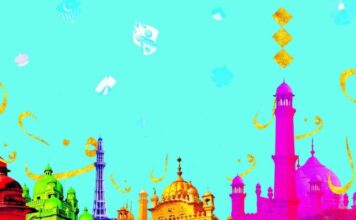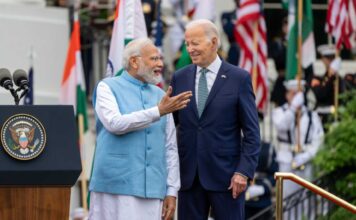By Bal Ram Singh, PhD
In Ramananda Sagar’s Ramayan serial there is a scene when Guru Vashishtha takes Ram and his brothers as disciples or shishyas after their Upanayan Sanskar or the Sacred Thread ceremony. As part of the ceremony Guru Vashishtha asks them whose Brahmachari were those brothers. All four said in unison that they were his brahmacharis.
At that point, Guru Vashishtha says, as depicted in the serial, that first of all, they were all the brahmacharis of Brahma, the creator; then they were the brahmacharis of Indra, king of all devas; then they were the brahmacharis of Agni deva, who is the ultimate source of energy and standard of purity of anything, both literally and metaphorically, as in Agni-Pariksha. After being recognized as brahmacharis of these divine powers, they were the brahmacharis of him, the Guru Vashishtha, the Kulguru of the Ikshvaku dynasty that claims the lineage to personalities like Raja Harishchandra, Raja Sagar, Raja Bhagiratha, Raja Raghu, and Raja Ram.
The concept of Guru and Gurukul ought to consider such standards for education even in today’s world to bring the originality of the Indian concepts and practices, and only then would be able to realize the true meaning of guru and shishya. Brahma (ब्रह्मा) being the most notable way of expressing the Brahm (ब्रह्म) is the ultimate source of primordial creativity. The Brahm, the one Veda claims in Aham Brahmasmi (अहम् ब्रह्मास्मि) is not easily definable, as shown below from Rig Veda Nasadiya Sukta 10.129.
iyaṁ visṛṣṭir yata ābabhūva yadi vā dadhe yadi vā na।
yo asyādhyakṣaḥ parame vyoman so aṅga veda yadi vā na veda।।
Then even nothingness was not, nor existence, There was no air then, nor the heavens beyond it. What covered it? Where was it? In whose keeping Was there then cosmic water, in depths unfathomed?
na mṛtyur āsīd amṛtaṁ na tarhi na rātryā ahna āsīt praketaḥ।
ānīd avātaṁ svadhayā tad ekaṁ tasmād dhānyan na paraḥ kiṁ canāsa।।
Then, there was neither death nor immortality Nor was there then the torch of night and day. The One breathed windlessly and self-sustaining. There was that One then, and there was no other.
kāmas tad agre sam avartatādhi manaso retaḥ prathamaṁ yad āsīt।
sato bandhum asati nir avindan hṛdi pratīṣyā kavayo manīṣā।।
In the beginning desire descended on it. That was the primal seed, born of the mind. The sages who have searched their hearts with wisdom know that which is kin to that which is not.
Thus, the Kama is the origin of karma which is performed resulting from the vibrations of the self, described as above from Nasadiya suktam as Big Bang Singularity, the state before which everything was pure existence and pure consciousness, ānīd avātam, without vibration, and thus the world begins with vibration pointing towards the origin of the world that drives the diversity.
Lack of true enlightenment in even the most knowledgeable, like the scholars, educators, and intellectuals, tends to be an unwritten rule or expectation for humans to be most evolved in terms of superiority among the current species of organisms. This has led to sometimes bending or accommodating the rules to suit the conclusion.
This superiority concept of humans then leads to individual egoism, groupism of communities, and finally to national and religious identities that smack of rigidity in place of creativity, the Brahmacharya. Lack of creativity is the cause of inertia or intellectual stagnation and physical territorization, leading to conflicts, in place of unity in diversity, the mantra of yoga and human evolution.
It is this inertia that drives people to limit their creativity to, for example, reading books, and at the most memorizing it to flex their intellectual accomplishments. It is but natural that with time, the rigidity creeps in, not because of a better understanding through practice of the brahmacharya, rather the lack of it, leading to disconnect of the original knowledge to the modern reality.
From a historical policy perspective, this is actually a lack of secularization or making the concepts relevant to the time, and has nothing to do with treating every religion the same, that usually makes living in the past due to the lack of brahmacharya.
The Patanjali Sutra 2.38 (brahmacharya pratisthayam virya labhah) being interpreted to mean brahmacharya as celibacy is a stark example of this phenomenon, pervading the educational scholarship (priests and professors) even in India. Its actual meaning is “one should always remain established in awareness of the highest reality through conducting an infinite set of creativity of Brahma (brahmacharya) to retain vitality in various aspects of life.”
Let’s invite the intellectuals to follow brahmacharya in their profession, not in their bed!

Balram Singh is a Professor and the President of the Institute of Advanced Sciences, Dartmouth, Massachusetts, researching Ayurveda, Yoga, Vedic education, and Vedic social and political traditions. He is also an adjunct faculty at Jawaharlal Nehru University (JNU), New Delhi.













